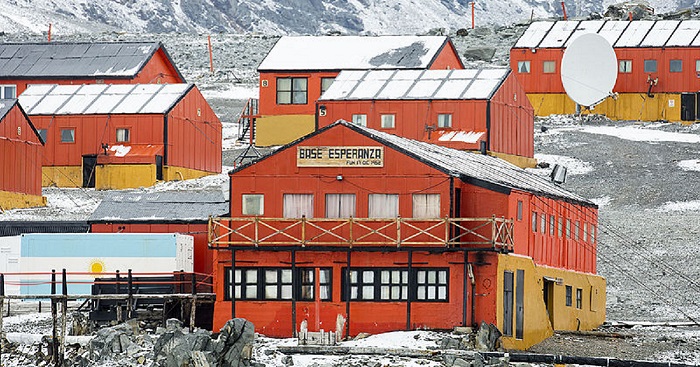
Did you know that Antarctica, the coldest place on the entire planet, has some warm spots as well? Not only that, but one of these spots has recently reached a record high temperature for the continent, that of 18.3°C (65°F).
The surprising temperature was measured on the Argentine station Esperanza, located on the Antarctic peninsula. Built in 1953, the base is an all-year-round Argentine research station, housing 55 inhabitants in winter, including 10 families and 2 school teachers.
The Argentine research base Esperanza, on the northern tip of #Antarctic Peninsula, saw a new record temperature of 18.3°C today (old one 17.5°C on 24 March 2015), per @SMN_Argentina.
— WMO | OMM (@WMO) February 6, 2020
Details of previous record at https://t.co/19Un83mmHn#ClimateChange pic.twitter.com/ZKvzr765Am
This temperature beats the previous Antarctic record by 0.8°C (3.44°F), set in March 2015, which measured 17.5°C (63.5°F), according to the station data. The station report from Ogimet shows the maximum temperature ever recorded.
18,3°C in Antarctica. https://t.co/0VOSdLzXTy
— Greta Thunberg (@GretaThunberg) February 7, 2020
The truly highest record temperature for the Antarctic region is 19.8°C (67.64°F), recorded on the Signy Island back in January 1982. However, that station isn't an actual part of the main Antarctic continent like the Esperanza station, since it is an island. Esperanza station is located on the northern tip of the continent's peninsula, which points towards South America.
Antarctica recorded its hottest temperature ever on Thursday: 65 degrees Fahrenheit (18.3 degrees Celsius) https://t.co/Rq8KAFMfCd pic.twitter.com/h5AZNqxLga
— Reuters (@Reuters) February 8, 2020
The very warm temperatures at the penninsula tip of the Antarctic continent can also be caused by southward winds, which warm the air via the foehn effect. The Foehn effect occurs when air passes over mountains, causing the valleys on the downwind side ('lee' side) to recieve strong gusts followed by warmer temperatures and dryer air. This can actually bring about a major warming effect. You can see in the diagram below just how there is more warmer air temperatures on the "lee" side of antartica.
18.3°C! - new highest temperature recorded for continental #Antarctica, yesterday at Esperanza Base, the northern tip of the Antarctic Peninsula, 63°23′S; previous record was 17.5°C in 2015 also at Esperanza @SMN_Argentina; records began at the station in 1961, pic Nestor Franco pic.twitter.com/1qhbv0rDQj
— The Antarctic Report (@AntarcticReport) February 7, 2020
In the first diagram below, we can see the temperature analysis from the GFS model, over the Antarctic peninsula. It is clear that there is a "warm pool" building on the "lee" side of the mountains which is caused by the foehn effect because as there are winds blowing downhill. Some details, such as temperature maximums can not be shown through this modelling but shows the process behind the temperature spikes well. The second diagram shows the terrain relief which is a key factor causing the foehn effect. The third diagram is a wind analysis, which shows which direction the wind is prevailing in, and as it indicates it is exactly matching the what kind of pattern is expected to cause the warming foehn effect.
📢 January #temperature highlights from #Copernicus #C3S:
— Copernicus ECMWF (@CopernicusECMWF) February 4, 2020
🌡️In Europe, last month was the warmest January in our record, at 3.1°C warmer than the 1981-2010 average
🌡️Globally, it was warmest January in our record, but only barely warmer than 2016
More➡️https://t.co/Y2Eb3jfZvG pic.twitter.com/t4JI24kpnE
Nevertheless, while having these warm spots, Antarctica is the coldest place on Earth. The lowest natural temperature ever recorded at ground level on this planet is −89.2°C (−128.6°F). It was measured at Antarctica's Soviet Vostok Station on 21 July 1983 by ground measurements.
























COMMENTS